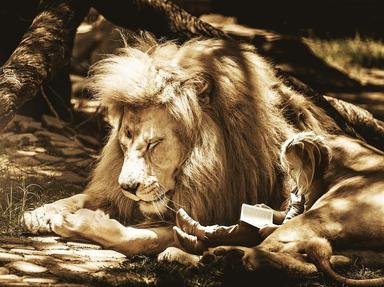
1000 Years of Animal Stories Trivia Quiz
Can you put these animal stories or poems in the order they were written? To help you, I've also given the name of the author.
An ordering quiz
by stedman.
Estimated time: 3 mins.

| What's the Correct Order? | Choices |
| 1. (620BC approx) | The Tyger (William Blake) |
| 2. | Black Beauty (Anna Sewell) |
| 3. | The Flea (John Donne) |
| 4. | The Jungle Book (Rudyard Kipling) |
| 5. | The Call of the Wild (Jack London) |
| 6. (1877) | Fable of the Ant and the Grasshopper (Aesop) |
| 7. | Moby-Dick (Herman Melville) |
| 8. | Jonathan Livingston Seagull (Richard Bach) |
| 9. | The Parliament of Fowls (Geoffrey Chaucer) |
| 10. (1970) | Animal Farm (George Orwell) |